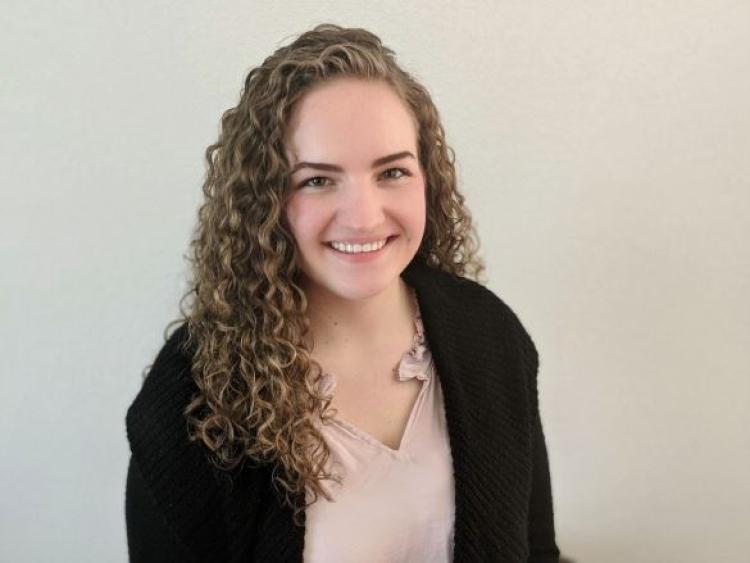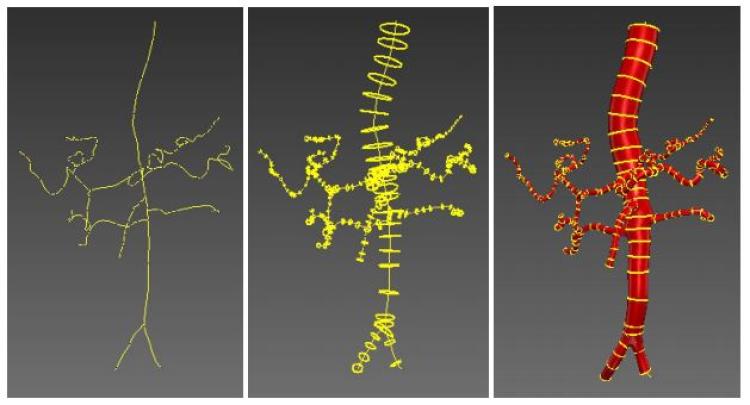
Mechanical engineering undergraduate researcher, Autumn Zemlicka.
The ME SPUR Program, modeled after CU Summer Program for Undergraduate Research, enabled undergraduate students to work with mechanical engineering faculty during summer 2020 on research that could be conducted remotely. As a participant, Autumn Zemlicka worked with Assistant Professor Debanjan Mukherjee to develop an in-house library of models for arterial hemodynamics in human patients, using CT and MRI scans and microscopy image data. Her summer research project was titled, Image-Based Modeling for Cardiovascular Systems.
Zemlicka is a fourth-year undergraduate student studying mechanical engineering who is passionate about learning and developing new skills in the field of engineering. Her insights below provide a window into her research experience with ME SPUR.

Process of creating a patient-specific model from CTA images on Simvascular.
Describe your summer research.
The goal of this project was to take medical Computed Tomography Angiography (CTA) images of patients and create computer models for studying arterial hemodynamics. This project focused on the hepatic and abdominal circulation, looking specifically at patients with hepatocellular carcinoma, a type of liver cancer. The project required using an open source tool named SimVascular to create 3D computer models of arterial networks and 1D simulations of pressure and flow waveforms in the networks. I worked on image processing and model generation from CTA images, image-based modeling of catheters into the vessels, and 1D pressure-flow waveform analysis based on the models.
The end result of my research project is a physiologically accurate, patient-specific model of the hepatic and abdominal circulation with and without a catheter embedded inside the vessels. This project was part of a larger ongoing research effort in Professor Mukherjee’s group to study vascular drug delivery. The model I have created will be used to run a 3D simulation to quantify and visualize arterial hemodynamics and the effectiveness of drug delivery through the catheter in hepatocellular carcinoma patients. Doctors will be able to use these results to decide on the best course of radio-oncological interventions to treat the diseased region.
What was it like working on a research project remotely?
My project was relatively easy to work on remotely, because the medical images are able to be sent electronically, and the modeling software could be used on my personal computer. I was able to work individually on my project and could communicate over Zoom and through email with any questions I had. However, I still had the opportunity to work and communicate with other researchers in my lab group during our weekly meetings. I was able to participate in weekly journal clubs where we discussed relevant research papers. I was also able to participate in learning opportunity sessions focused on subjects such as scientific visualization and the fundamentals of GPU computing.
What challenges did you encounter and work through as part of your project?
Learning the new skill of quantitative medical image processing and modeling presented many challenges. For example, I encountered an issue during the smoothing of the bifurcations in the artery model. The software I used was having issues creating smooth sections and would instead create inconsistencies on the surface of the model which is undesirable for physiologically accurate simulations. In order to fix this, I learned how to use a separate program, Meshmixer, which had no issues smoothing the bifurcation regions to make the model physiologically accurate.
What about this project was rewarding?
The most rewarding part of the project was seeing the final model I had created and how it accurately represented the patient’s anatomy. I put a lot of effort into perfecting the model and ensuring it will be a beneficial tool in understanding this patient’s arterial hemodynamics. It is also very rewarding to know that my work will directly help clinicians decide on best therapy actions and will ultimately yield results that impact the lives of patients.
What advice would you share with other students considering getting involved in research?
The advice I would give to other students considering getting involved in research is to do it! It is very rewarding and gives you a worthwhile learning experience. Also, do not be afraid to struggle and ask a lot of questions, because your advisors want to ensure you are successful and will consistently support you throughout the duration of your research.
